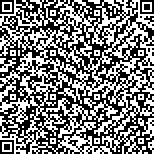| 摘要: |
| 利用介质阻挡强电离放电的方法, 将空气中的O2和海水中H2O电离离解成OH等氧化自由基, 溶于海水中形成高浓度羟基药剂。羟基致死压载水中入侵的细菌、微藻生物的反应属于游离基反应, 具有广谱致死特性, 在压载水外排(或输入)过程中就可致死入侵微生物, 不存在药剂污染海洋环境等问题。实验室研究结果表明: 致死微生物的羟基阈值为0.8mg/L。
|
| 关键词: 强电离放电,羟基药剂,压载水,有害微生物 |
| DOI:10.11693/hyhz200305003003 |
| 分类号: |
| 基金项目:国家自然科学基金重点资助项目,60031001号;国家自然科学基金资助项目,69901001号 |
|
| THE KILLING OF MICROORGANISMS IN SHIP’S BALLAST WATER USING HYDROXYL RADICALS |
|
BAI Min-Dong, ZHANG Zhi-Tao, BAI Xi-Yao, ZHOU Xiao-Jian, DENG Shu-Fang, WANG Ning
|
|
Environmental Engineering Research Institute, Dalian Maritime University
|
| Abstract: |
| Catastrophic consequences due to the invasive microorganisms have drawn much attention all over the world. In terms of the treatment of ship's ballast water, until now, there have been no effective methods according to the MEPC and the Global Ballast Water Management Item Group (GloBallst).
A physical method is studied in which the electrons are accelerated and the gas molecules are aroused using a strong dielectric barrier discharge. With this method, a strong electric field (Ed ≥400Td, 1Td=10-17Vcm2) is formed with the thinner α-Al2O3 dielectric layer in the narrow discharge gap at high pressure (P≥0.1MPa or n= 2.6×10-19/cm3). The electrons achieve on average an energy level of above 12eV. As a result, O2 in air and H2O in seawater is ionized and dissociated into activate particles such as OH, O+2, O(1D) and HO2 radical. High dissolved hydroxyl (OH*) concentrations
of more than 10mg/L are achievable with the activate particles dissolved in seawater (a part of ballast water) with a high
mass transfer efficiency.
The principles of organism killing by hydroxyl radical are as follows. (1)Oxidization and decomposition of amino acids of introduced organism: the activated groups such as -OH,-NH2 guanidino in amino acids of protein play an important action on maintaining proteinic configuration and catalytic activity of enzyme; when the hydroxyl radicals react with the activated groups, the chemical damage of protein causes the death of introduced organisms. (2)The hydroxyl radical reacts with Deoxyribonucleic Acid (DNA) to produce DNA adducts, resulting in chemical damage without any restoration. (3)Hydroxyl radicals act on the lateral chain of phosphatide polyunsaturated fatty acid of cell membrane to lead to rapid degradation of polyunsaturated fatty acid.
With a dissolved hydroxyl ratio concentration of 0.15mg/L, the kill efficiency of bacteria sum reaches 99%. At the concentration of 0.6mg/L, the kill efficiency of bacteria sum reaches almost 100%. After 5 minters of reaction, the hydroxyl ratio concentration to kill Ba. Navicula, Ch. Dunaliella, P. Subcordiformis ranges between 0.6—0.8mg/L, and the kill efficiency is above 99.0%. The data of algae chlorophyll-a change with hydroxyl reaction show that the critical dissolved hydroxyl value to kill micro-organisms is 0.8mg/L.
Hydroxyl radicals that kill the introduced micro-organisms are associated with a dissociative radical reaction with a high reaction rate, and have a broad-spectrum deadly characteristic. After 20 minutes, the hydroxyl radical is decomposed into H2O and O2, which a“green” medicament without any toxin and residues. Therefore, this method is effective with a low cost for the treatment of ship's ballast water.
|
| Key words: Strong ionization discharge, Hydroxyl medicament, Ship's ballast water, Introduced microorganism |
